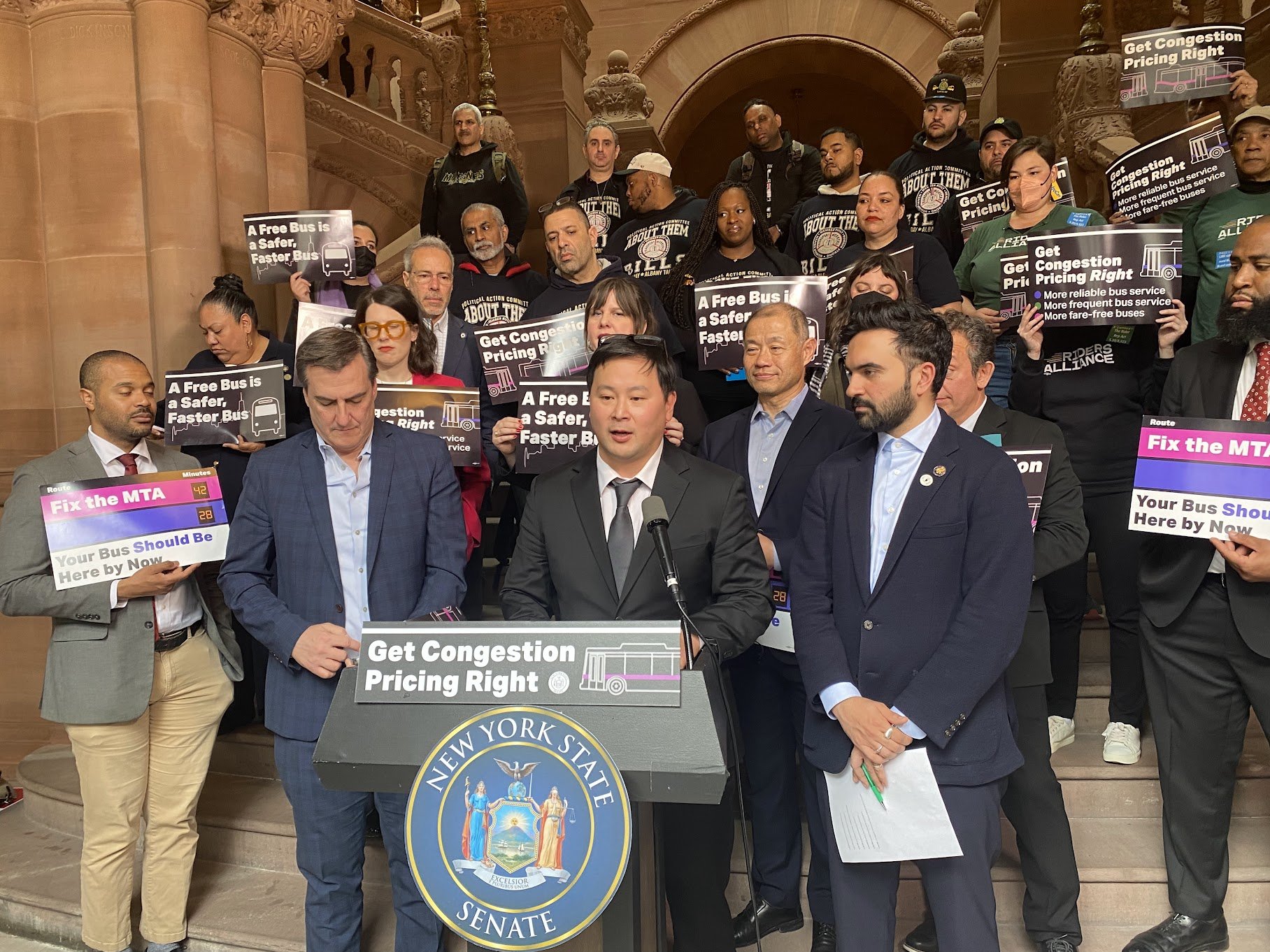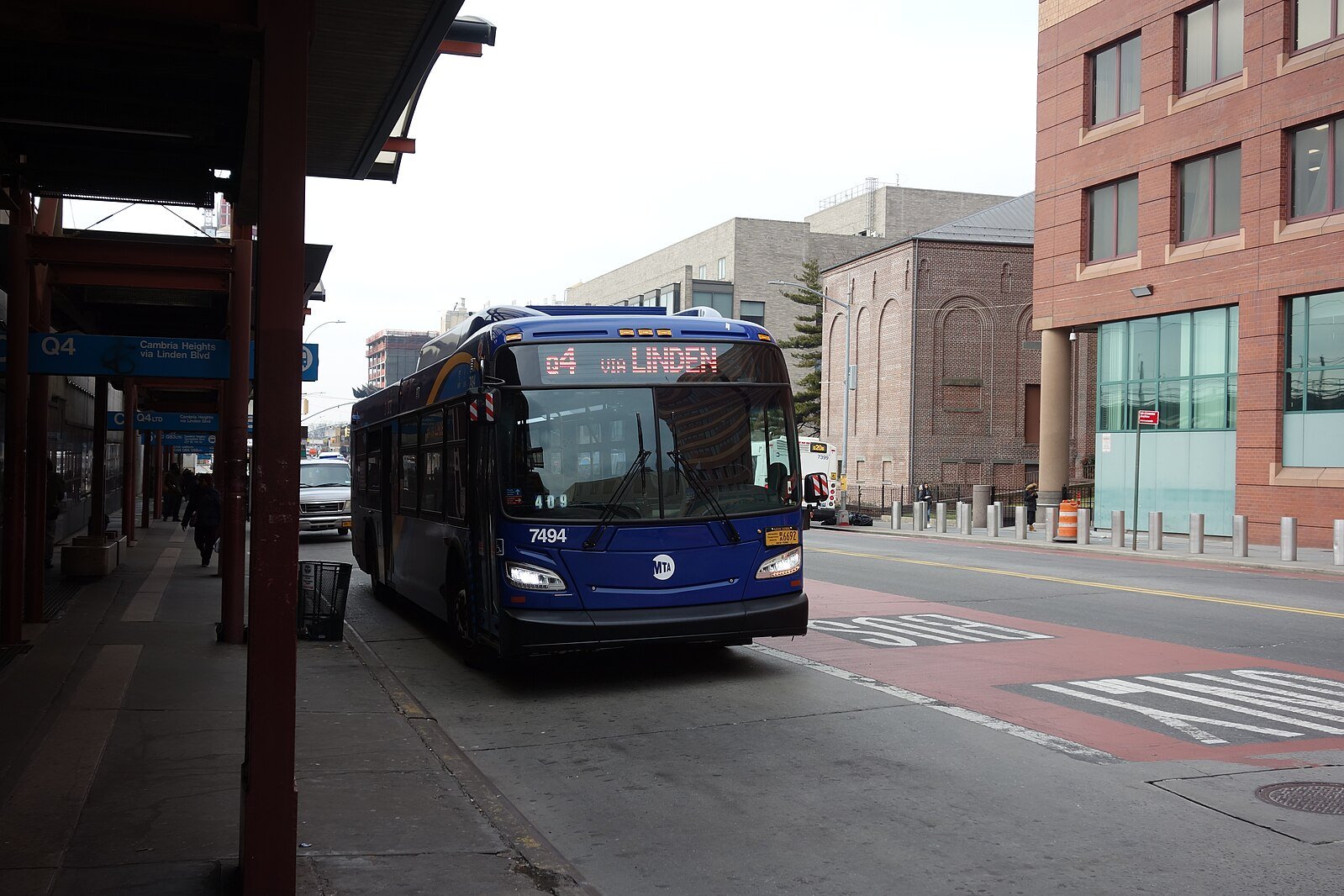Queens pols want better buses in budget
/Queens elected officials rallied in Albany on Wednesday for improved buses in New York City ahead of the implementation of congestion pricing. Photo via the Office of Assemblymember Zohran Mamdani
By Ryan Schwach
As the city gets closer to the implementation of congestion pricing later this year, a group of elected officials – including many from Queens – want to see money in the state’s budget for better, faster and more reliable buses in the five boroughs.
On Wednesday, elected officials and advocates rallied in Albany for the “Get Congestion Right” plan, a proposal to include $90 million in the budget for improved bus service in the city, which is championed by Queens electeds.
The proposal, led by Queens Senator and Deputy Majority Leader Michael Gianaris and State Assemblymember Zohran Mamdani, includes $45 million to expand the MTA’s fare-free bus pilot from five to 15 lines, and another $45 million to increase bus frequency and reliability ahead of the introduction of congestion pricing, which will charge drivers for driving into lower Manhattan
The package was included in the Assembly and Senate’s one house budget resolutions last week, but advocates now want to see it make it through to the final state budget.
“We are here once again to demand that the budget includes the money that the MTA needs to improve bus service in a couple of very important ways,” said Gianaris, who represents sections of Western Queens.
The “Get Congestion Pricing Right” proposal mostly builds on transportation measures Gianaris and Mamdani have been pushing for heavily under their “Fix the MTA” platform, which includes free buses, frozen fares and investment in increasing train and bus reliability and frequency.
While the lawmakers support the ideals behind congestion pricing, they want to see more revenue raised from it go to the city's bus system, which could see more use as soon as congestion pricing takes effect.
“We are asking that on the first day that congestion pricing be implemented on that first day New Yorkers get a bus system far better than the one that they have today,” said Mamdani. “Because right now what we're seeing is a transit system that still requires you to wait for a bus that sometimes you don't even know if it's going to arrive.”
Last year, the Western Queens electeds secured $35 million for increased subway frequency, as well as a pilot program which brought one free bus route to each borough including the Q4 in Queens.
The program has led to a seven to 20 percent ridership increase on those five fare-free routes, President of New York City Transit Richard Davey told Upper East Side outlet Our Town in December.
The new proposal is now calling for that program to be expanded from one bus route in each borough to three, bringing the total number of fare-free New York City buses to 15.
“It has been wildly successful,” Gianaris said.
Speaking in Albany on Wednesday, several other officials spoke in support of the plan, saying it will have the largest impact in their outer borough communities that struggle with transportation.
“If we're getting congestion pricing, all we're saying is that money has to be spent to help New Yorkers get across the city better and faster,” said Assemblymember Khaleel Anderson, who represents the far-flung areas of Southeast Queens many describe as a transportation desert.
“Last year, when I dared to see how long it takes to get from the northern part of my district in South Richmond Hill to the most southern part of my district in the Rockaways, and boy, that was a fun hour and a half and three buses and 20 minute headways in between,” he said.
Congestion pricing has received heavy criticism however, and pushback in the city has particularly come from outer borough communities who deal with limited transportation options and chiefly drive to work.
Samuel Santaella, a South Queens resident and member of the transportation group Riders Alliance, said he supports congestion pricing but is also directly affected by troubled bus services.
City officials want to see improvements to the city’s bus services, including expanding a free bus pilot program, which includes the Q4 in Southeast Queens. File photo by Tdorante10/Wikimedia Commons
“Because I don't drive, buses and walking have been my primary modes of transportation for two decades,” he said.“This hits harder for people who regularly travel between the far reaches of the outer boroughs because they have to make two or even three transfers, paying double fares because the MTA only allows one free transfer.”
Other Queens electeds said that the MTA has been abdicating its duty to its riders.
“The MTA and this review board has kind of forgotten that it's not just about raising revenue,” said State Senator John Liu. “It is about providing those options, and no better option than that we can improve upon in the city of New York than buses…faster buses, safer buses, more reliable buses.”
“That's what it's going to take to get many, many more New Yorkers out of their cars,” Liu added. “So let's get congestion pricing right.”
The state budget is expected to be finalized on April 1.





